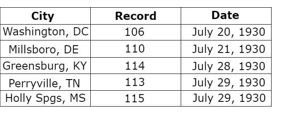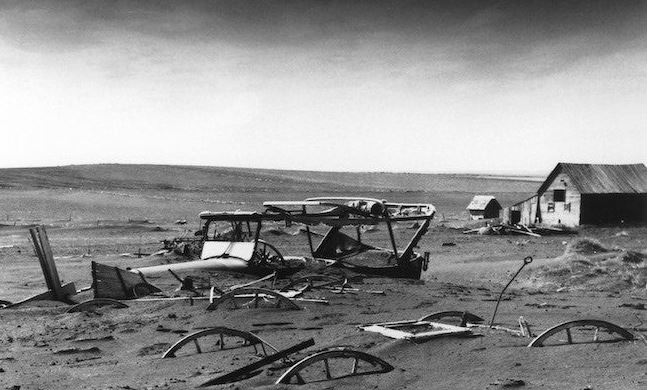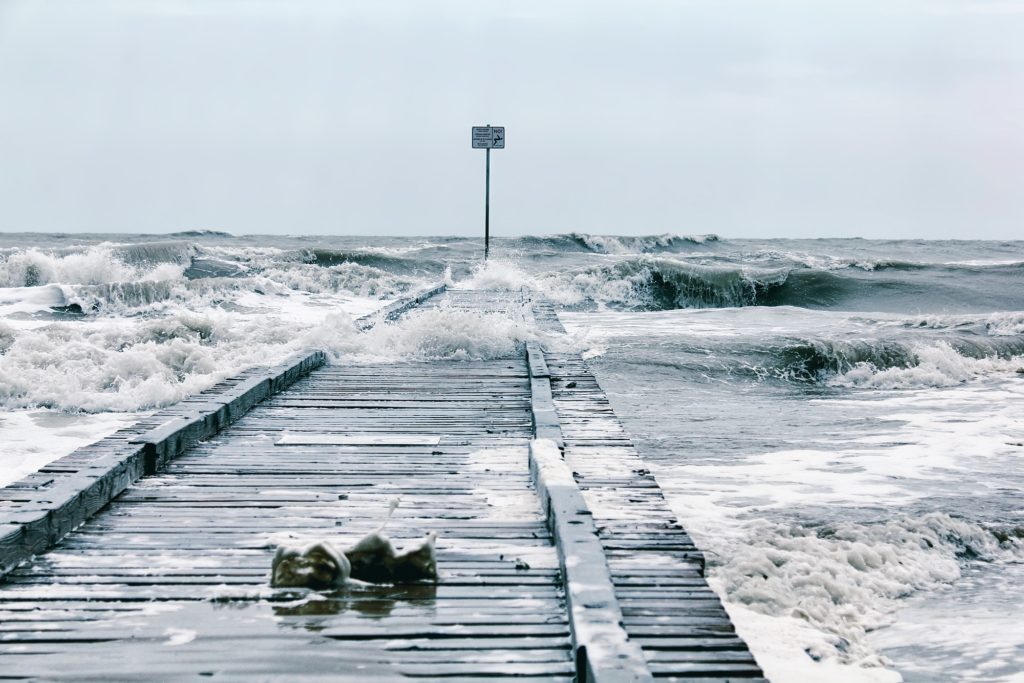As I write this, most of the eastern and southern sections of the U.S. are in the grips of a nasty heat wave. Fortunately, the heat will be relaxing a bit over the next few days. Right now, we will go back 95 years when a stifling summer heat wave had a firm grip on a significant portion of the nation. There would be more heat waves and plenty of drought as the 1930s progressed !
High temperatures became hotter and more unbearable across a large section of the nation as July progressed during the summer of 1930. A pervasive heat wave went on to set all-time state records and it set the tone for widespread heat and drought for most of the decade.
Extensive drought combined with inadequate farming techniques combined to trigger devastating dust storms that wiped out crops. Many families in the Plains left their farms and moved to other states like California. Widespread poverty prevailed amidst the Great Depression !
Brutal July Heat With All-Time Records
Residents of the U.S. were ill prepared for an onslaught of summer heat back in 1930. Air conditioning was a luxury and most folks had to deal with the elements. By late July, intense heat extended from the Plains to the Eastern Seaboard. Washington, D.C. endured a 10-day stretch of unbelievable heat from July 19th to July 29th with temperatures reached at least 100 degrees.
Washington, D.C. endured a 10-day stretch of dangerous heat from July 19th to July 29th with temperatures reached at least 100 degrees. The highest temperature during that stretch was 106 degrees and that is their all-time record high. According to the Washington Post, some thermometers n that day recorded temperatures of 108 and even 110 degrees in the city. Up to 30 people lost their lives there from the heat.
On July 21, 1930, high temperatures of 100 degrees, or higher, were widespread from the Plains to parts of the Midwest and South, all the way to the Mid-Atlantic region.
The heat wasn’t just confined to Washington, D.C. Suffocating heat was widespread. Several state records were set during the last part of July.
The table below indicates all-time state high-temperature records that were set (including D.C.).
It has been estimated that the U.S. death toll reached four digits during the summer of 1930. The heat extended into August, as well. On August 4th the all-time state record was set at Moorfield, West Virginia as they reached 112 degrees. An August record of 108 degrees was set at Carlisle, PA on the same day.
As the summer of 1930 came to an end, little did anyone know that this would be the first of many hot summers across much of the U.S. during the 1930s. Rainfall became scarce during that decade across the midsection of the nation and that was one of the factors that led to the “Dust Bowl”. Heat and drought became the “norm’ during that decade. The summer of 1936 was even hotter than 1930 across much of the nation!
Setup For Extreme Heat
A ridge of high pressure aloft (or bulge in the jet stream) established itself over the Southeastern U.S. during July of 1930. In these situations, the air sinks and warms, resulting in mainly clear skies and hot temperatures.
The effects of this ridge expanded northward and westward and it refused to break down easily or quickly. As a result, high temperatures in the 90s, and quite often over 100 degrees became a daily occurrence from Texas, up through the Plains and Midwest, and eastward to the Atlantic.
The summer of 1930 contributed to the overall hardships that the general population had to endure during the Great Depression. A sprawling ridge of high pressure aloft became a frequent visitor over much of the nation in the summers that followed.
More 1930s Heat Wave Events
Although the 1930 heat wave set the tone and established several all-time U.S. records there were other major heat events during the 1930s. The extreme drought in the Plains in the “Dust Bowl” era contributed to the malaise. Every year from 1931 to 1936 has significant ones, the 1936 heat wave, which I have written about before, was the most severe. The death toll was listed at 5,000 but its believed that its much higher than than that.
 Here are a few examples of extremely hot temperatures hot it was in July of 1936.with high temperatures over 100 degrees.
Here are a few examples of extremely hot temperatures hot it was in July of 1936.with high temperatures over 100 degrees.
In the Upper Midwest, Steele, North Dakota set an all time record with an astonishing 121 degrees. Sioux City Iowa reached 111 degrees, Minneapolis, Minnesota, hit 105 degrees while Green Bay, Wisconsin, topped off at 103 degrees!
Heat, Drought and Dust Storms wiped out most farms in the nation’s midsection during the 1930s . Photo Credit- U.S. Department of Agriculture.
Farther east, Washington, D.C. reached 105 degrees while Baltimore and Philadelphia hit 103 degrees. Central Park in New York City topped out at 106 degrees !
Hopefully, we won’t encounter heat of this scope again !





